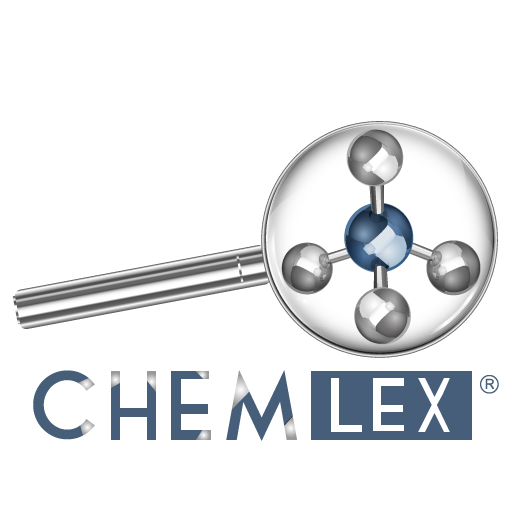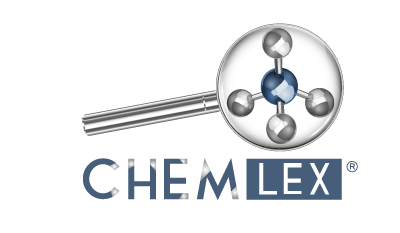CHEMLEX activitiy fields
REACH means regulation (EC) No 1907/2006 of the European Parliament and of the Council of 18 December 2006 concerning the Registration, Evaluation, Authorisation and Restriction of Chemicals (REACH), establishing a European Chemicals Agency, amending Directive 1999/45/EC and repealing Council Regulation (EEC) No 793/93 and Commission Regulation (EC) No 1488/94 as well as Council Directive 76/769/EEC and Commission Directives 91/155/EEC, 93/67/EEC, 93/105/EC and 2000/21/EC ( OJ L 396, 30.12.2006 )
REACH regulation applies to all entities producing or importing chemical substances (in quantities of at least 1 ton per year) also from third countries and the European Economic Area (Iceland, Liechtenstein, Norway).
An issues related to the act of 25 February 2011 on the Chemical Substances and Their Mixtures.
CLP means regulation (EC) No 1272/2008 of the European Parliament and of the Council of 16 December 2008 on classification, labelling and packaging of substances and mixtures, amending and repealing Directives 67/548/EEC and 1999/45/EC, and amending Regulation (EC) No 1907/2006.
CLP applies to manufacturers, importers, users and distributors of chemicals or mixtures. Regardless of tonnage, substances or mixtures should be classified, labeled and packaged in accordance with the CLP regulation requirements before they are placed on the European market and EEA market (Iceland, Lichtenstein, Norway).
RoHS II means directive 2011/65/EU of the European Parliament and of the Council of 8 June 2011 on the restriction of the use of certain hazardous substances in electrical and electronic equipment.
The RoHS II directive sets out the rules for limiting the use of hazardous substances in electrical and electronic equipment, hereinafter referred to as “EEE”, which are aimed at improving the protection of human health and the environment, with particular emphasis on the recovery and disposal of used EEE.
Issues related to the Act of 30 August 2002 on the conformity assessment system.
Issues related to the Act of 13 April 2016 on conformity assessment and market surveillance systems.
Products covered by the NEW REGULATION (EU) 2019/1009 OF THE EUROPEAN PARLIAMENT AND OF THE COUNCIL of 5 June 2019 laying down rules on the making available on the market of EU fertilizing products and amending Regulations (EC) No 1069/2009 and (EC) No 1107/2009 and repealing Regulation (EC) No 2003/2003.
Products covered by regulation (EC) No 2003/2003 of the European Parliament and of the Council of 13 October 2003 relating to fertilisers.
The act of 10 July, 2007 on fertilizers and fertilizing.
Regulations of innovative fertilizing products from organic or secondary raw materials in accordance with the circular economy model and the bioeconomy strategy. The fertilizing products means mineral fertilizers, organic fertilizers, liming materials, organo- mineral fertilizers, growing media, biostimulants, soil improvers.
Products covered by the regulation and placed on the market in accordance with Regulation (EC) No 1107/2009 of the European Parliament and of the Council of 21 October 2009 concerning the placing of plant protection products on the market and repealing Council Directives 79/117/EEC and 91/414/EEC (with later amendments),
The Act of March 8, 2013 on plant protection products and executive acts to this Act.
Products covered by the Regulation (EC) No 1069/2009 of the European Parliament and of the Council of 21 October 2009 laying down health rules as regards animal by-products and derived products not intended for human consumption and repealing Regulation (EC) No 1774/2002 (Animal by-products Regulation)
The regulation (EU) 2019/1148 OF THE EUROPEAN PARLIAMENT AND OF THE COUNCILof 20 June 2019on the marketing and use of explosives precursors, amending Regulation (EC) No 1907/2006 and repealing Regulation (EU) No 98/2013
The regulation harmonises rules on the introduction, making available, possession and use of certain substances or mixtures that could be misused for the illicit manufacture of explosives also limit its accessibility to the general public and report suspicious transactions.
Products comply with the requirements of the directive 2009/48/EC of the European Parliament and of the Council of 18 June 2009 on the safety of toys.
Act of 13 April 2016 on conformity assessment and market surveillance systems.
Products comply with the requirements of the regulation (EC) No 1223/2009 of the European Parliament and of the Council of 30 November 2009 on cosmetic products.
Act of 4 October 2018 on cosmetic products.
Products comply with the requirements of the regulation (EC) No 648/2004 of the European Parliament and of the Council of 31 March 2004 on detergents.
Regulation (EU) No 259/2012 of the European Parliament and of the Council of 14 March 2012 amending Regulation (EC) No 648/2004 as regards the use of phosphates and other phosphorus compounds in consumer laundry detergents and consumer automatic dishwasher detergents.
Products comply with the requirements of the Council Directive of 20 May 1975 on the approximation of the laws of the Member States relating to aerosol dispensers.
Issues related to the Act of 30 August 2002 on the conformity assessment system and regulation of the Minister for the Economy of 5 November, 2009 on detailed requirements for aerosol products.
In 2011 The Commission adopted the definition of a nanomaterials (Commission recommendation of 18 October 2011 on the definition of nanomaterial (2011/696 / EU)). Currently, there are several EU legal acts and technical guidelines supporting the implementation of legislation, with particular reference to nanomaterials.
Endocrine disruptors are substances or mixtures that interference with the body’s endocrine system and produce adverse developmental, reproductive, neurological, and immune effects in both humans and in its progeny.
Products comply with the requirements of the Regulation (EU) 2020/740 of the European Parliament and of the Council of 25 May 2020 on the labelling of tyres with respect to fuel efficiency and other parameters, amending Regulation (EU) 2017/1369 and repealing Regulation (EC) No 1222/2009
Communication from the Commission to the European Parliament, the Council, the European Economic and Social Committee and the Committee of the Regions A European Strategy for Plastics in a Circular Economy.
Materials and products intended for contact with food that meet the requirements of the regulation (EC) No 1935/2004 of the European Parliament and of the Council of 27 October 2004 on materials and articles intended to come into contact with food and repealing Directives 80/590/EEC and 89/109/EEC
Products comply with the requirements of the regulation (EU) No 10/2011 of 14 January 2011 on plastic materials and articles intended to come into contact with food.
Products comply with the requirements of the Commission regulation (EC) No 450/2009 of 29 May 2009 on active and intelligent materials and articles intended to come into contact with food.
Act of 25 August 2006 on safety of food and nutrition
The Minamata Convention on mercury is a global treaty to protect human health and the environment from the adverse effects of mercury.
The most important points of the Minamata Convention are the prohibition of opening new mercury mines, gradual withdrawal and reduction of mercury consumption in many products and processes, mercury emission control measures to the atmosphere. The convention also touches on the issue of temporary storage of mercury and its disposal.
The Stockholm Convention on Persistent Organic Pollutants is a global treaty to protect human health and the environment from chemicals that remain intact in the environment for long periods, become widely distributed geographically, accumulate in the fatty tissue of humans and wildlife, and have harmful impacts on human health or on the environment.
The provisions of the Convention require each party to prohibit or eliminate the production and use, as well as import and export of intentionally produced POPs (Persistent Organic Pollutants). The convention promotes the use of best available techniques and best environmental practices to prevent the release of POPs.
The Rotterdam Convention on the Prior Informed Consent Procedure for Certain Hazardous Chemicals and Pesticides in International Trade was adopted in Rotterdam 10 September 1998.
The Convention applies to pesticides and industrial chemicals that have been banned or severely restricted for health or environmental reasons by Parties and which have been notified by Parties for inclusion in the PIC procedure (Prior Informed Consent).
The purpose of the Convention is to promote shared responsibility and joint efforts in the international trade of certain hazardous chemicals to protect human health and the environment from potential harm.
The Basel Convention on the control of transboundary movements of hazardous wastes and their disposal was adopted in Basel on March 22, 1989, deals with hazardous waste management.
The Convention covers a wide range of waste identified as ‘hazardous waste’ based on its origin or composition and its characteristics, as well as two types of waste identified as ‘other waste’ – household waste and incinerator ash.
The purpose of the Convention is, among others:
• reduction of hazardous waste generation and promotion of environmentally safe management of hazardous waste, wherever the place of disposal
• the restriction of transboundary movements of hazardous wastes except cases where it is perceived to be in line with the principles of eco-management.


